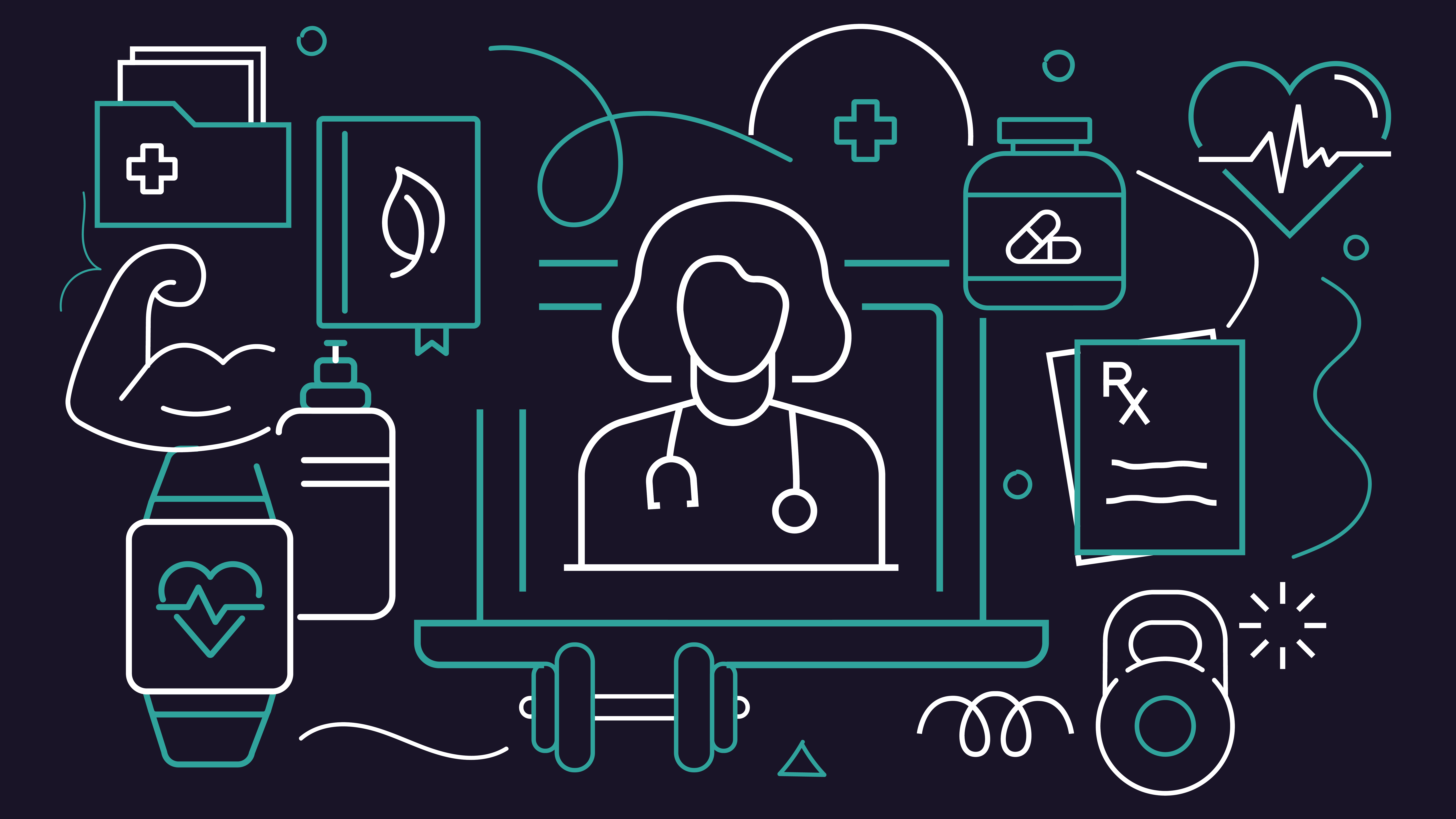Dream with me for a minute:
Medtech as pandemic hero. A global pandemic. Highly fragmented and rapidly evolving science. People testing at home, at work, at an office, in the hospital, all to diagnose this virus. Governments struggling to titrate a response that keeps the population safe while preserving economic activity and financial security for the vulnerable. Out of the fog of confusion steps a global diagnostics company whose connected platforms offer real-time insights about the progression of this virus. This company is able to pinpoint geographic factors and positivity rates. By combining this information with claims data, it can share demographic insights about who is testing, critical facts about results and ultimately insights about transmissibility. This smart platform from a diagnostics company is the hero of science guiding policy as local governments develop smart policies focused on science over politics.
Medtech as cancer cryptographer. Continuing in the area of medical diagnostics, come with me to the challenging world of oncology. But in this world, every tumor is sequenced. Consider an enormous panel of every diagnosed tumor. Conceptualize a massive database of everything that is known about these dark enemies—and not just the genomics in their malignant splendor, but also the combatants that take arms against them. Imagine if we chronicled and documented these battles in detail, from dose to duration to surgical plan and recovery support. These real-time experiments will lead to a canon of successes and failures that someday, empowered by artificial intelligence (AI), will chart a personalized course to survival for nearly every type of cancer. Oncology can move from the dark arts of struggle against a secret enemy to a highly protocolized treatment regimen with well-characterized outcomes.
Medtech as cardiology guardian. Let’s move to cardiology. If we look at the plethora of wearables, implantables and diagnostic tests available, we should be able to slice hospitalizations and mortality dramatically with a little remote patient monitoring (RPM) providing insights, AI guiding decisions and proactive communication between caregiver and patient. Personally, I believe that heart failure is the next frontier in chronic care that can be upended with dramatic effect to save cost and lives through connected care.
Medtech as schoolyard defender. Lastly, let’s imagine a world of pediatric care that doesn’t involve trips to the doctor’s office, doesn’t involve prescriptions of antibiotics “just in case,” doesn’t require parents to stay home from work—again, just in case. Let’s imagine professional-guided home tests that allow for the right care that reduces absenteeism for the parents, reduces inappropriate prescribing of antibiotics and gets the kid back safely to class as fast as possible, all without a visit. Home diagnostics with a connected care solution can power this outcome.
The above four examples are actually not dreams—they are not only technically feasible, but well within reach if the industry makes some smart choices. And you will notice that they place medtech at the center of the connected healthcare future. Yet a medtech-centric connected future is by no means an inevitable conclusion. In fact, part of me worries whether medtech will participate in shaping a connected future and realize a fate that’s more aspirational than hardware supplier. Achieving this vision will require a strengths-based strategy, a defensive plan against pitfalls and purposeful partnerships. I propose three critical moves medtech can make now to secure a leading position in the connected future.
Step 1: Identify your inherent strengths and craft your strategy to fit them
The decision to jump into connected health is not original! For every moderately good idea there are three VC-funded startups and three more SPACs waiting to happen. Competing on the frontiers of healthcare is not for the faint of heart. But I argue that medtech has some inherent advantages to inventory, understand and build upon.
While not universally applicable, medtech has the critical advantage of working closely with clinicians in the health system. Seldom does a medtech company work at cross-purposes with healthcare professionals, but instead amplifies their effectiveness or efficiency. Rarely do we see the phrase “disrupting healthcare” being applied to a traditional medtech, or that the goal for their solutions is to replace clinical stakeholders. AI in radiology failed when it was positioned as a technology to replace and outsource the work of reading scans and only started to take hold when it was seen as an extensible tool for the radiologist. A tool like Medtronic’s GI Genius provides a clear case-in-point: The study conducted and all of the language around it are constructed on assisting the clinician to get better outcomes instead of replacing the clinician. This ability to work within established clinical workflows is a critical point for medtech to emphasize.
In addition to credibility with the clinical stakeholder, medtech also approaches challenges with a deep understanding of the incentives that exist within health systems. Medtech companies, assuming they stay close enough to existing therapy areas and specialists, have the advantage of knowing how money flows, what incentives exist and the levers to pull to complement rather than resist existing momentum. Already operating inside this existing ecosystem should be an advantage when identifying the areas and applications of connected health in which to participate.
Finally, the ability to navigate evidence dissemination and protocol development tends to be a strength for medtech. The more established a particular medtech company might be in a particular therapy area or specialty will present a platform from which to build. Of course this is never easy. But having an established presence in a space is a strong starting point for understanding the current state of the science and dynamics among opinion leaders.
Some of the above suggestions may feel as though they are stifling aspirations. This need not be the case—only that medtech companies need to be cognizant of the place from which they are building. It is important to consider the ingredients that will allow medtech companies to win in such a crowded and well-funded space.
Step 2: Avoid the traps
Avoid the traps, and there are many. Although the industry may seem immediately adjacent (it’s called medical technology after all), going from a plastic and metal business to that of a technology-driven digital company thriving in a connected ecosystem is far from ensured. There are some critical pitfalls to avoid.
One of the most evident traps is the assumption that managing an implant (or capital equipment) is the same as managing a digital product. The approach to innovation is dramatically different when shifting a mindset from the frozen design cycle of a static product to the dynamic world of continuous incremental improvement. This is the gulf between how you manage a stent that was approved 10 years ago to software that is updated every few weeks. It’s important to find ways to ensure rigor in designs without choking continuous innovation. Concepts like launching with a minimum viable product and rapidly innovating, ensuring investment in infrastructure, putting value on data ownership—all of these are table stakes for digital solutions that are very easy to forget within a traditional medtech environment.
There is a need to acknowledge these differences not only in spirit, but also in organizational design. The very notion of “upstream” and “downstream” needs to be rethought in an environment of rapid incremental innovation. Long selling cycles, new approaches to generating demand and selling solutions instead of products requires a very different mindset and often a very different organization. I am not encouraging medtech businesses to start “failing fast,” or “move fast and break things,” but they need to at least introduce some elements of the traditional tech ethos.
An additional critical element that can be easy to forget is that the experience matters. Of course outcomes remain a critical goal, but in the connected world, often the experience contributes to the outcome. A patient who engages more often with an interface they find intuitive is much more likely to make the necessary behavior modifications that improve their outcomes. When a physician interacts with a digital solution that is frictionless, saves time, delivers insights and even suggests solutions, the human in charge of the outcome can make more timely and better decisions. With this in mind, the experience influences the outcome.
A last pitfall to guard against is the traditional medtech view of creating closed ecosystems and proprietary systems. Medtech tends to “go it alone.” There is also a propensity to take every problem and solve it with a closed system, adding services and solutions into the device price. This notion is quite good at reinforcing incumbency, but can be a real impediment to nimble, platform-oriented solutions that span an entire department, patient journey or disease state. Which leads to the final step.
Step 3: Access critical capabilities through partnerships and acquisitions
A final step involves a bit of hubris and introspection. If you accept my premise that medtech needs to resist the urge to create proprietary closed systems and to go it alone as a default mode, how then should you approach the problem? In many ways, once you recognize that you can’t do everything, one of the most difficult questions becomes: make, buy or partner?
Every situation will be different. The right strategy would appear to be the one that gets to scale with the right speed, achieves the right business impact, preserves the right competitive strategies, manages investment and ensures sufficient flexibility. No small task. But we can share a few simple pieces of advice:
- If you buy it, don’t break it. Be sure not to crush the asset’s value, which is often cultural and intangible, that compelled you to buy it in the first place.
- If you make it, don’t starve it. Resist the urge to underestimate the feat of building from scratch or the effort it will take to sustain the asset.
- If you partner, mind your fences. No partnership can last forever, and this is especially true for asymmetric partnerships. Like a good marriage, partnerships should never be taken for granted. It’s important to be prepared with a plan for what should happen if you eventually separate.
We often say that the future of connected healthcare runs straight through medtech. But this path should not be taken for granted, especially if the industry doesn’t want to be relegated to an equipment supplier down the road. In order to take the position that will make medtech a hero in the connected healthcare story, medtech needs to thoughtfully invest now for the future it seeks to create.
Interested in hearing more about medtech’s leadership in the connected digital ecosystem of the future? Watch our on-demand webinar.
Add insights to your inbox
We’ll send you content you’ll want to read – and put to use.















